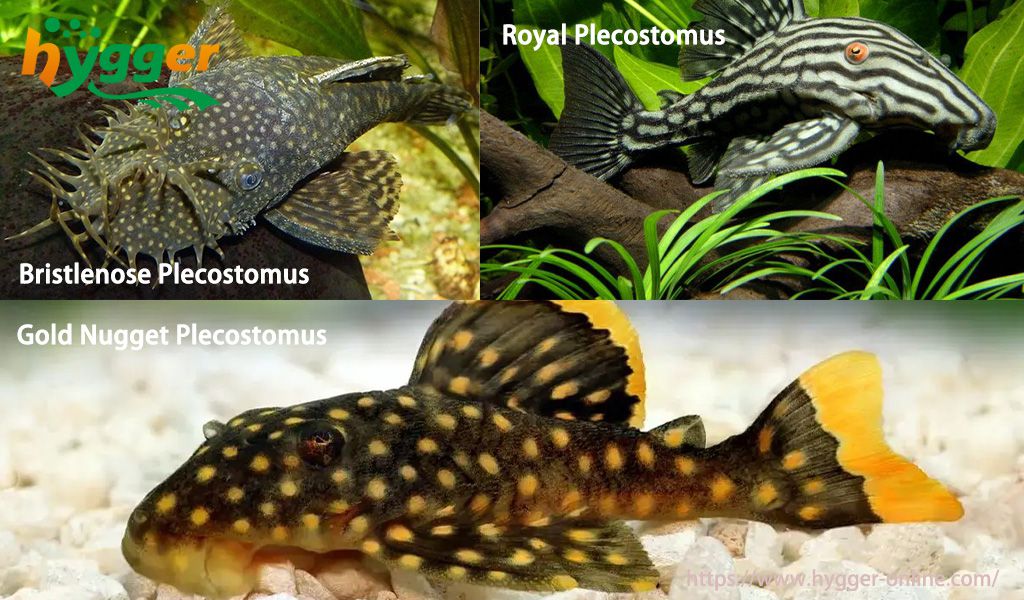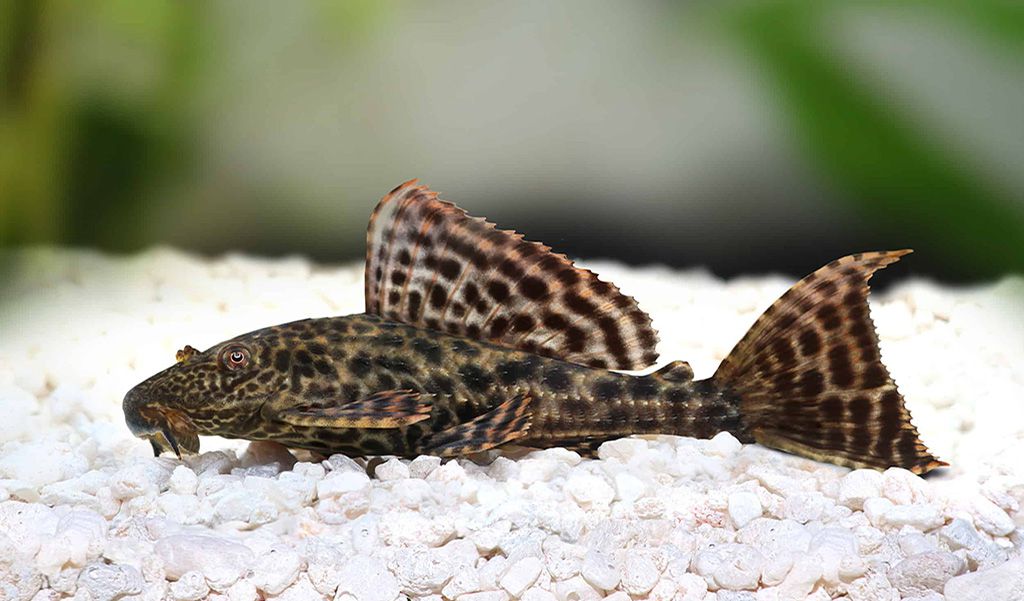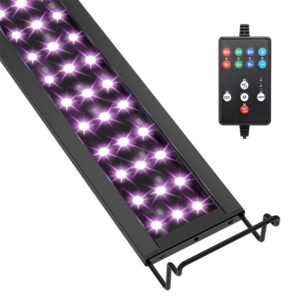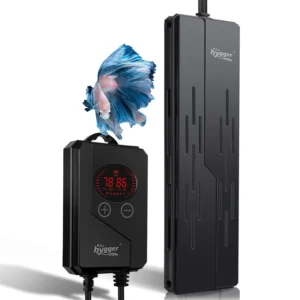Being famous for their distinct appearance and aquarium-cleaning ability, pleco fish also called suckerfish, are one popular choice for aquarists among cleaner fish. In this article, we will share some plecos types and care guides. So if you want to know more about pleco fish, just continue reading.
Content Table
Types and Natural Habitat of Plecostomus
Brief introduction of Plecostomus
Plecostomus is a sucker fish, belonging to the Loricariidae family. It is one tropical freshwater fish, which is native to the Amazon River basin in South America. In the wild, it is fond of fresh or brackish water with fast-flowing streams. Moreover, it can store oxygen in the belly. With sufficient oxygen in the belly, it can survive outside water for about 30 hours.
Next, let’s learn some basic information about pleco fish:
|
|
|
|
|
|
|
|
|
Types of Plecostomus
There are diverse types of Plecostomus. Before getting into deeper learning, we would like to list some here.
| Bristlenose Plecostomus | Royal Plecostomus | Gold Nugget Plecostomus | Zebra Plecostomus |
| Clown Plecostomus | Sailfin Plecostomus | Common Plecostomus | Rubber Lip Plecostomus |
| Leopard Frog Plecostomus | Snowball Plecostomus | Blue-eyed Plecostomus | Butterfly Plecostomus |
| Sunshine Plecostomus | Peppermint Plecostomus | Vampire Plecostomus | Green Phantom Plecostomus |
| Candy Striped Plecostomus | Tiger Plecostomus | Orange Spot Plecostomus | Trinidad Plecostomus |
| Spotted Sailfin Plecostomus | Mango Plecostomus | Queen Arabesque Plecostomus | Flat Flyer Plecostomus |
| Hypostamus Plecostomus | Lujans Plecostomus | Rhino Plecostomus | Sultan Plecostomus |
Next, let’s take a look at some pleco fish mentioned above.
- Bristlenose Plecostomus
Featuring protruding bristles on the mouth and nose, Bristlenose Plecostomus can grow up to 4–5 inches. It is peaceful and can get along well with other fish in aquariums. Also, their brown body color makes them invisible in tanks sometimes.
- Royal Plecostomus
Royal Plecostomus can reach 16–17 inches. Also, it is grayish-brown and has horizontal strips. Though it is large, the fish hardly bully other fish species. Nonetheless, Royal Plecostomus are aggressive to other Royal Plecos and catfish. Hence, it is best not to keep them in the same aquarium.
- Gold Nugget Plecostomus
Gold Nugget Plecostomus comes in brown or black colors, while there are yellow spots on the body. Usually, it can grow up to 7–10 inches. The same as other plecos, Gold Nugget Plecostomus is a bottom dweller. Nevertheless, it is recommended to add an aquarium lid. Otherwise, it may try to escape sometimes.

How Do Pleco Fish Clean the Tank?
Pleco fish play a role in cleaning aquariums and maintaining ideal living conditions. They eat algae, decaying plants, uneaten food, fish feces, or other waste. And it helps to keep clean water. Plecos’ lips are thick, like suckers. Consequently, they clean the aquarium glass by adsorbing on the glass.
Will Plecos Eat Other Fish?
What do pleco fish eat?
Pleco fish are omnivorous. They eat algae, decaying aquatic plants, and rotten wood in your tank. Also, if there are no adequate algae in the tank, you can feed them earthworms, bloodworms, shrimp, small insects, squash, cucumbers, carrots, zucchini, algae wafers, or others. In addition, Plecos are active at night. As a result, it is best to feed them at night.
Do plecos eat fish?
Pleco fish are peaceful. Generally, they don’t eat healthy and live fish. However, they will eat other fish in some circumstances:
- Dead or decaying fish on the bottom of the fish tank
- Insufficient food supply causes protein deficiency
- A bad tank environment leads to aggression among fish
By the way, how to prevent plecos from eating other live fish in your tank?
- Create a habitable tank environment
- Provide sufficient food and nutrients
Care for the Pleco Fish
Tank decoration
- Substrate
Sometimes, pleco fish may burrow into the bottom of your fish tank. Hence, a substrate is needed. Sand, gravel, and aquarium soil are available options.
- Aquatic plants
Aquatic plants are necessary for plecos aquariums. Because the fish prefer to hide behind plants to protect themselves from attack. Also, plecos can get extra food from plants, like algae on plants. By the way, seeing that plecos would dig holes in the substrate, deep-rooted plants should be your first choices, like java fern, anubias, and Amazon sword.
- Hiding places
Aside from aquatic plants, other aquarium decorations can also meet the needs, such as caves, tree trucks, driftwood, and rocks.

Pleco fish maintenance
- Never overstock
An overcrowded aquarium may threaten fish’s health, while too many feces and waste is damaging to your fish, like ammonia poisoning. Usually, you should keep small plecos in a 20-30 gallon fish tank. However, the minimum tank size for adult plecos should be 75–80 gallons. Furthermore, the tank should be longer than its width.
- Regular water changes
In general, it is best to change 30-50 percent of aquarium water once a week. It can remove waste and decrease the ammonia level in your tank, which is beneficial for your plecos. By the way, you can clean your aquarium filter while changing the water.
- Add pieces of aquarium equipment
To keep sucker fish healthy and make sure that they live comfortably, you’d best add some pieces of aquarium equipment to maintain a habitable tank, such as an aquarium filter, air stone, or air pump.
- Aquarium filter & aquarium air stone: Setting up a great filtration system helps maintain good water quality. Because plecos will produce a lot of waste. Additionally, adding air stones can supply adequate oxygen to fish.
- Aquarium heater: The ideal water temperature of plecos should be 75-82℉. Consequently, it is best to add an aquarium heater to maintain consistent warm water.
The Suckermouth Catfish
In addition to pleco fish, there are other cleaner fish for home aquaria, such as Chinese algae eater, Macrotocinclus affinis, and Otocinclus catfish. If you want to know more about cleaner fish, you can go to Cleaner Fish Profiles – Best Cleaner Fish for Freshwater.
However, if there is hard-to-remove dirt in the fish tank corner, you’d better clean it with an aquarium cleaning tool kit.



Leave a comment